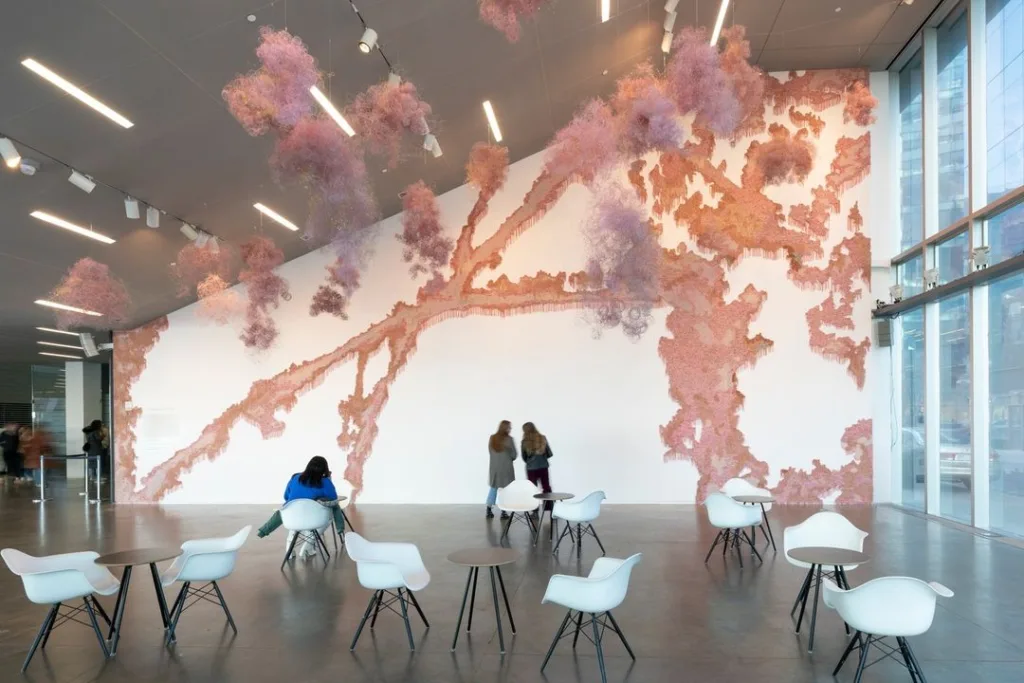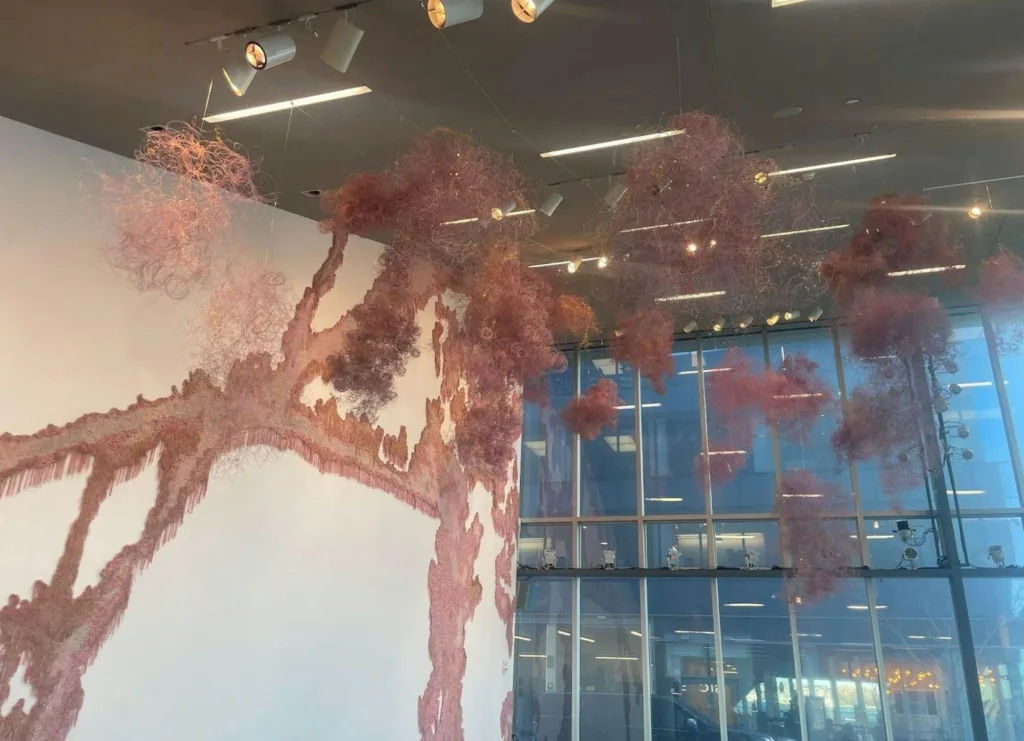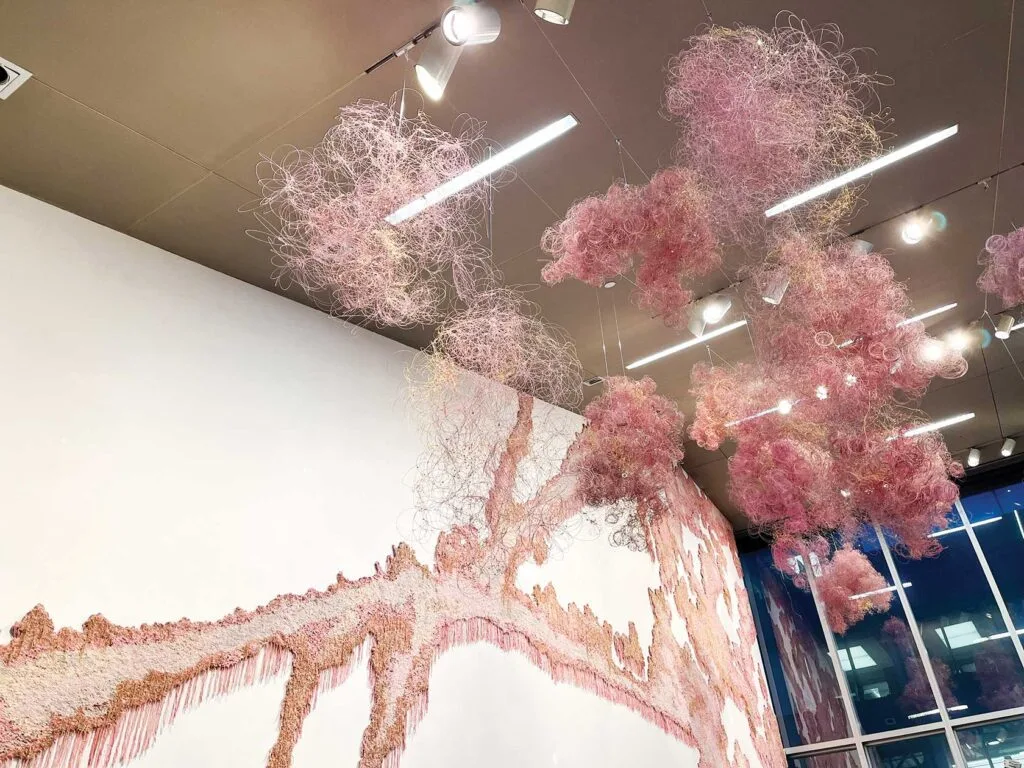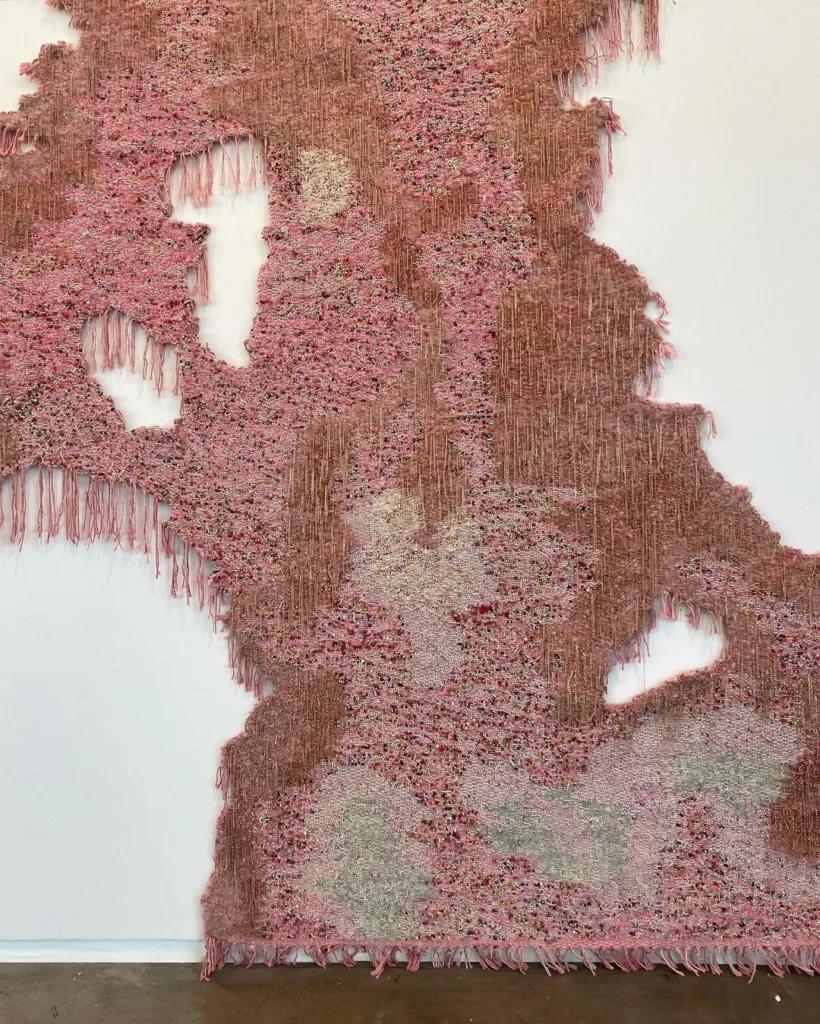The Institute of Contemporary Art, Boston unveiled a captivating installation titled “Lynloop” by South African artist Igshaan Adam, adorning the prestigious Sandra and Gerald Fineberg Art Wall at the entrance.

This sprawling textile masterpiece delves into community histories, familial bonds, and spiritual roots within Adam’s heritage, reflecting on his upbringing in hypermasculine environments and post-Apartheid South Africa. Constructed from a dense hand-woven blend of pink mohair, cotton thread, beads, and rose-gold chain, the installation resembles a sprawling map stretching across the expansive wall.

Inspired by the concept of “desire lines,” intuitive pathways diverging from designated routes, Adam infuses his childhood memories with elements of fantasy, also transforming a painful past into a vision of beauty, sensuality, and vibrant colour.

Describing the work as “a yearning for the beauty and fantasy of what could have been,” Adam infuses warmth and comfort into the cold memories of his past. Notably, “Lynloop” represents the first instance of artwork extending beyond the wall, with a series of hanging pink wire sculptures in the museum lobby further echoing the dust kicked up by traversing desire lines.

Ruth Erickson, the museum’s Barbara Lee chief curator and director of curatorial affairs, notes Adam’s exploration of returning to childhood spaces marred by societal constraints, particularly associated with masculinity. The artwork serves as a poignant reflection on the lasting impact of childhood experiences and the defiance inherent in desire lines, challenging the rigid boundaries of apartheid-era governance.
The installation, on display at the ICA until February 15, 2025, invites viewers to contemplate themes of pathways and transformation. As the Seaport neighbourhood also undergoes rapid development, grappling with questions of accessibility and identity, Erickson emphasizes the universal appeal of Adam’s project, fostering connections through shared experiences of beauty and the creation of personal pathways.


